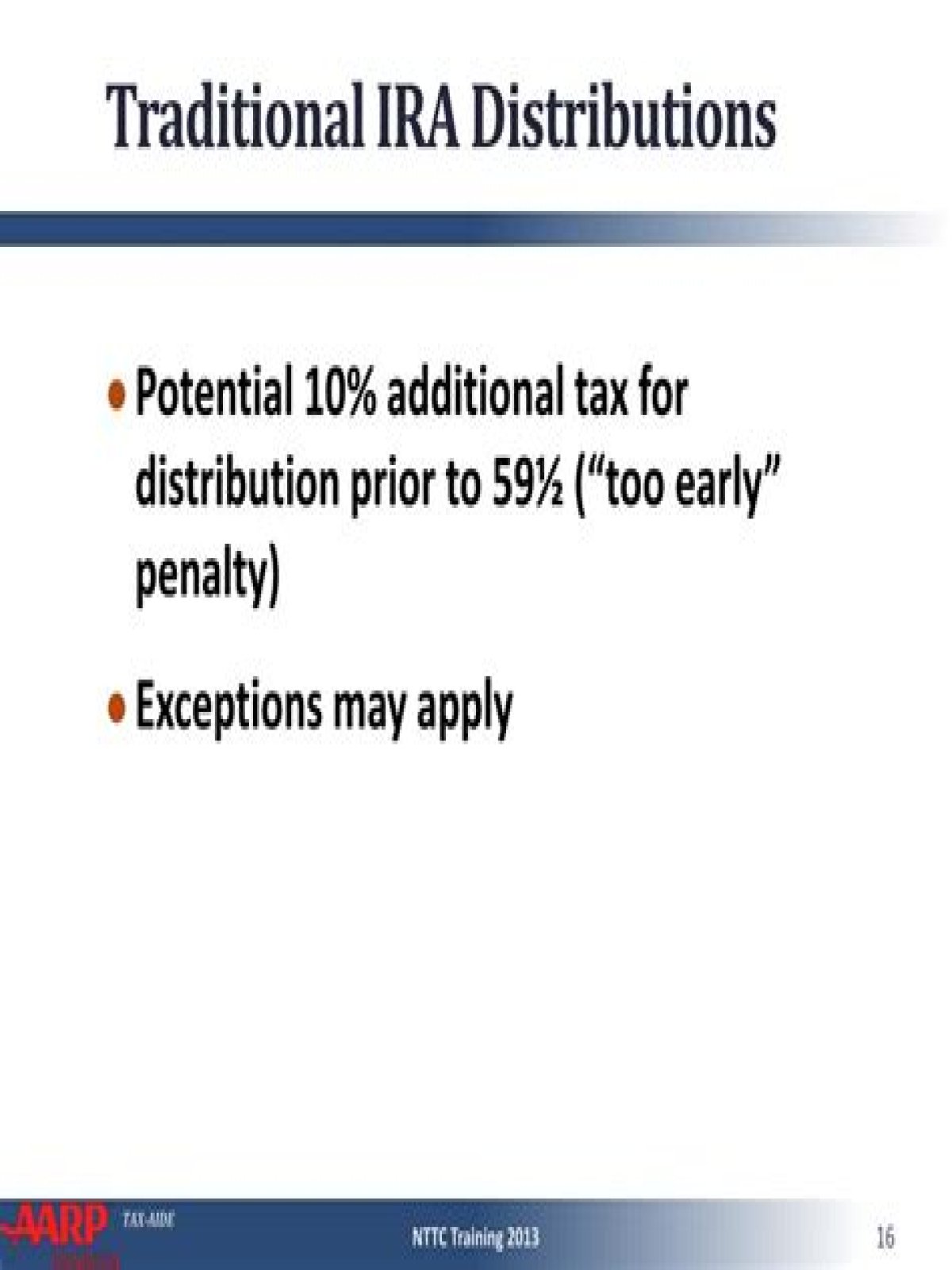How are distributions from a traditional IRA taxed?
Your annual distributions are included in the calculation of your total taxable income for that year. 1 The same rules do not apply to Roth IRAs, which are a quite different type of retirement account. Contributions made to a traditional IRA use pre-tax dollars. Roth contributions are made with post-tax dollars—an important distinction.
Can a converted IRA be distributed tax free?
Converted funds may be subject to penalty. Converted funds are always distributed tax-free. This makes sense since you already paid taxes when you converted them.
When do you not have to pay tax on IRA distributions?
Distributions prior to age 59 1/2 of up to $100,000 are not subject to the 10% excise tax in 2020, and, 3. Distributions of up to $100,000 this year can be reported as income over three years and/or repaid. The suspension of the RMD rules apply to all taxpayers who are otherwise required to receive an RMD in 2020.
Do you have to report IRA distributions for 2019?
You must still report your IRA distributions for 2019. The good news is that you won’t have to worry about this if you use tax preparation software or hire a tax professional to prepare your return. Both know where to enter the appropriate information.
Is there a penalty for making an IRA distribution before 59.5?
Certain IRA distributions made before you turn 59.5 years old will be subject to a 10% penalty — and that’s in addition to any income taxes you’ll owe on the money. The amount of your penalty depends on a few factors, so here’s what you need to know. How much will your penalty be?
What’s the penalty for not contributing to a traditional IRA?
You can expect to owe the IRS a penalty equal to 10% of this amount, or $1,000. If you made any non-deductible traditional IRA contributions, the penalty won’t apply to the non-deductible portion of the withdrawal.
How much do you have to take out of an IRA each year?
The IRS has very specific rules about how much you must take out each year. This is called the required minimum distribution (RMD). If you fail to take out the required amount you could be socked with a 50% tax on the amount not distributed as required.
They’re treated as ordinary income, taxable at your marginal tax rate. In general, distributions from a traditional IRA are taxable in the year you receive them. You can be hit with an additional 10 percent tax penalty if you take a distribution before the age of 59 1/2.
When do you have to start taking distributions from an IRA?
In general, distributions from a traditional IRA are taxable in the year you receive them. You can be hit with an additional 10 percent tax penalty if you take a distribution before the age of 59 1/2. The flip side of this is that you must begin taking distributions after age 72. 1 But what if you move the funds from one IRA to another?
Do you have to report IRA distributions for 2020?
You must still report your IRA distributions for 2020. The good news is that you won’t have to worry about this if you use tax preparation software or hire a tax professional to prepare your return. Both know where to enter the appropriate information.
When do you start paying taxes on a traditional IRA?
Updated October 27, 2018. You can start taking distributions from your traditional IRA without paying a penalty tax when you reach age 59 1/2, but the amount you withdraw is subject to income taxes.
